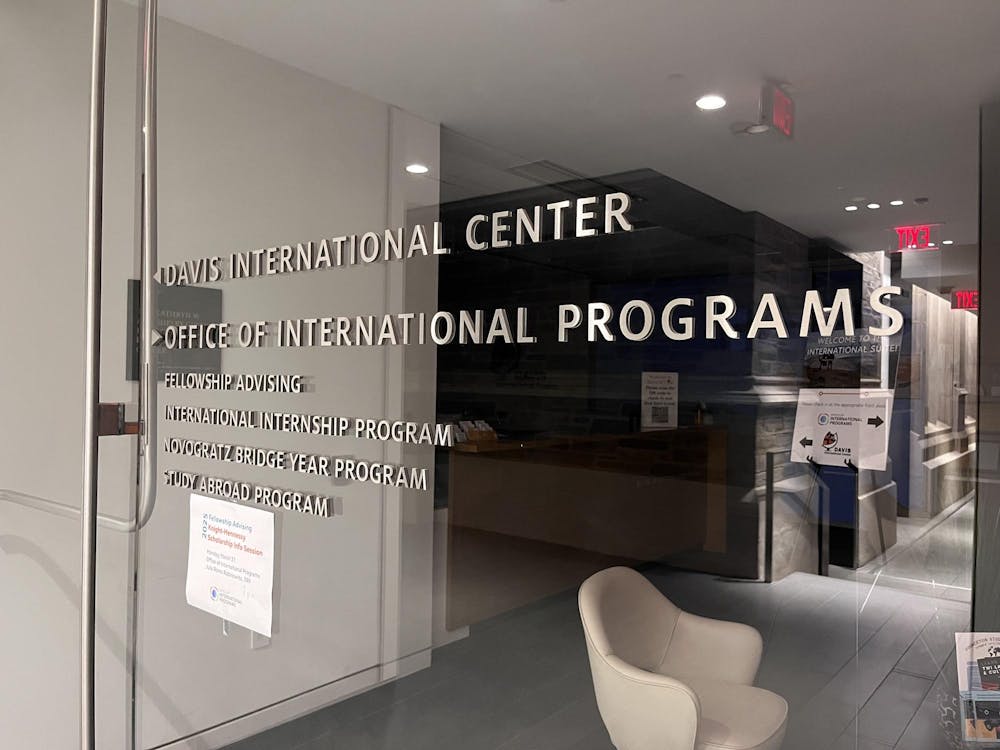The funds came from a $26 billion state aid bill approved by Congress in August and are expected to save the jobs of 3,900 teachers in New Jersey, according to federal officials. The funds come just months after Republican Gov. Chris Christie announced a nearly $820 million cut in funding for public education.
The largest and poorest school districts will receive the most money based on the department’s evaluation of districts’ needs, with Trenton receiving more than $7 million. Newark will get roughly $24 million.
The high-performing districts closest to campus will receive much more modest allotments. Princeton Regional School District, which serves both the Borough and the Township, will receive $180,594 after it saw a decrease of about $3.7 million in state funding. The West Windsor-Plainsboro Regional School District, which saw a decrease of $7.6 million, will receive $354,301. The 2009-10 fiscal year budgets for the Princeton and West Windsor-Plainsboro districts were $74.1 million and $151.4 million, respectively.
Under federal guidelines, the funds can be used for the salaries or benefits of nearly any employee outside the superintendent’s office, but districts may face pressure to use the money to hire more teachers or retain current teachers.
“I’m sure that the majority of school districts will use [the funds] to bring back teachers,” said Wilson School professor Richard Keevey, who formerly served as the state’s budget director and comptroller.
In a letter to the state’s school districts, Acting Commissioner of Education Rochelle Hendricks explained that the funds can be used for anything from cafeteria workers to bus drivers. “But it is my hope that this unexpected revenue will be directed to those areas most likely to help our students excel academically, namely classroom activities,” she wrote.
Alexis Morin ’12, president of Students for Education Reform, said that the group would encourage spending the funds “in ways that drive student achievement and narrow the achievement gaps that exist even in high-performing school districts.”
Hendricks also urged districts to be cautious about spending decisions, asking them to consider saving the funds for the 2011-12 academic year, which will likely be financially challenging.

“[T]hese one-time funds should not only preserve critical jobs, they should provide your district with the breathing room needed to plan for educationally sound, balanced budgets in the austere days to come,” she wrote.
“There’s very little expectation that next year this money will be available again,” Keevey noted.
Christie also emphasized the need to use the funds wisely in a statement last week. “The additional resources will be helpful, but this funding must be viewed for what it is — a one-time infusion of cash that will not be available to us the following year,” he said. “This funding, while welcome, must not change our commitment to careful, prudent budgeting that properly aligns state spending with revenues.”
The funds must be used by Sept. 30, 2012.

The state applied for federal funding under the Education Jobs Fund Program just days before the deadline, coming under criticism from the New Jersey Education Association, the state’s largest teachers union, for the delay. The union also condemned the public education budget cuts last March, which were part of a proposal aimed at reducing the state’s $10.7 billion deficit.
But Morin noted that the budget cuts might offer a “silver lining,” prompting districts to “abandon policies that are expensive yet minimally effective in raising student outcomes, such as seniority-based teacher layoffs.”
Local school district administrators could not be reached for comment when contacted Tuesday afternoon.







